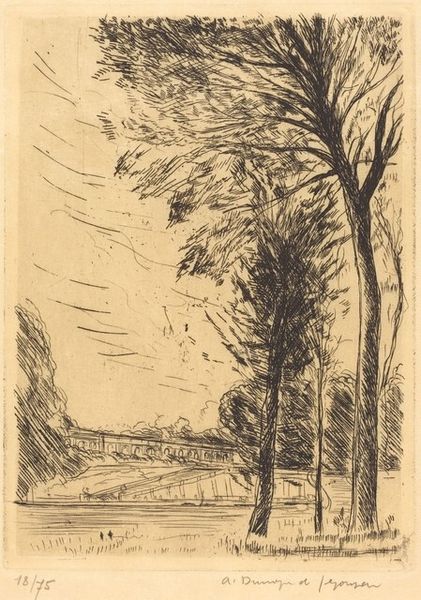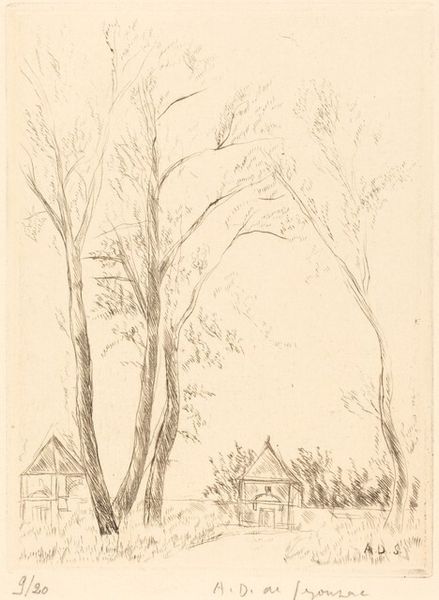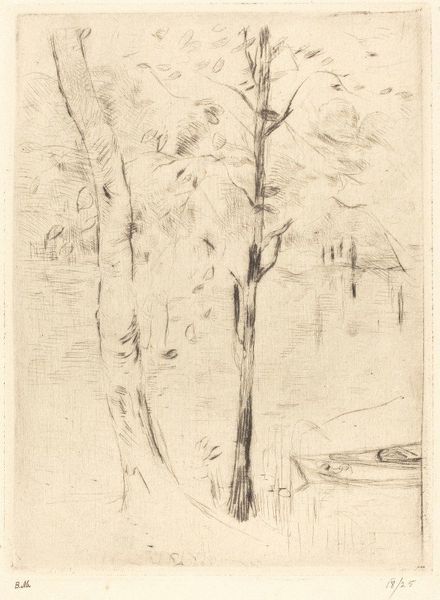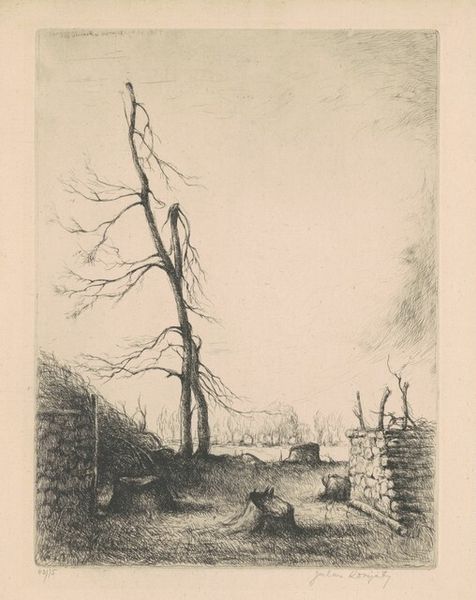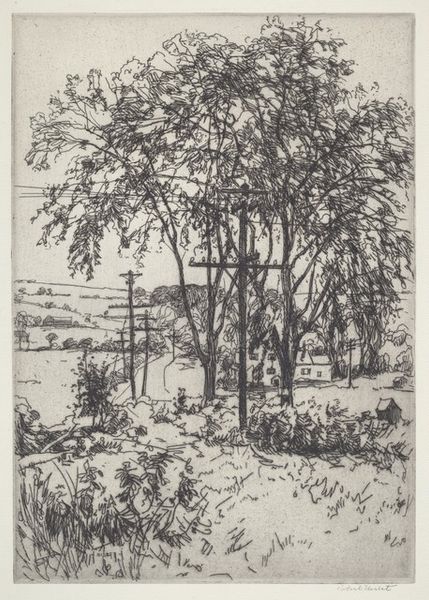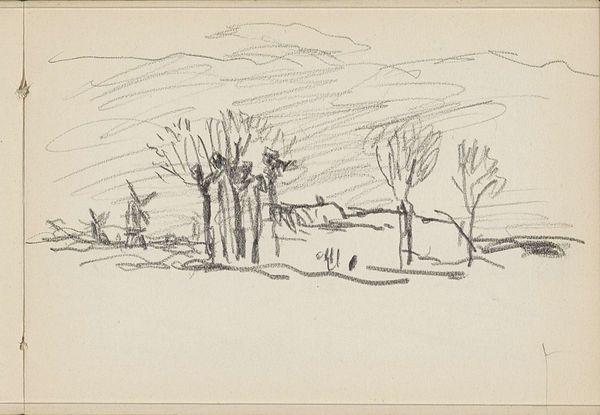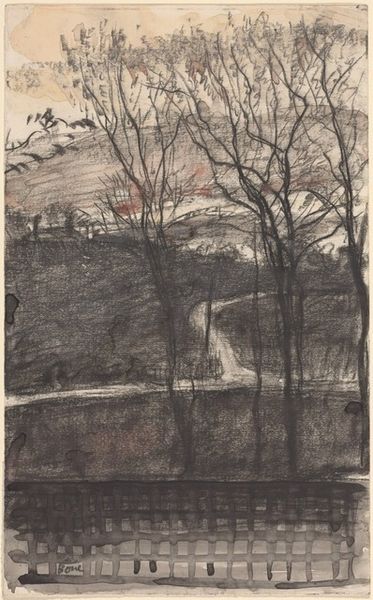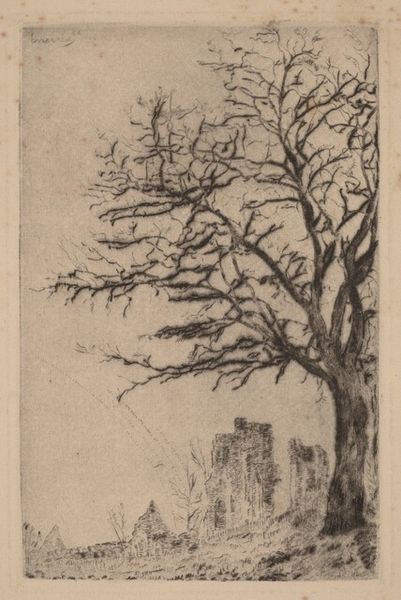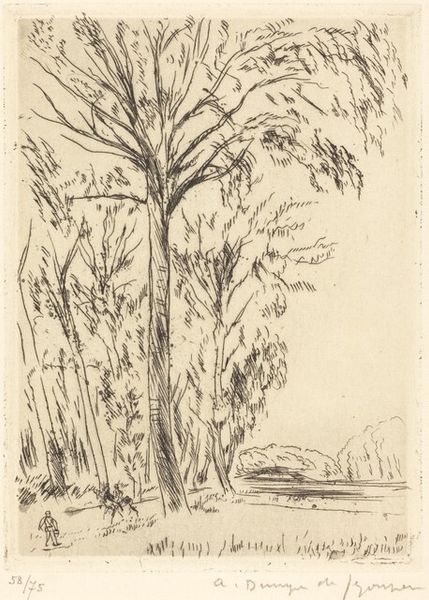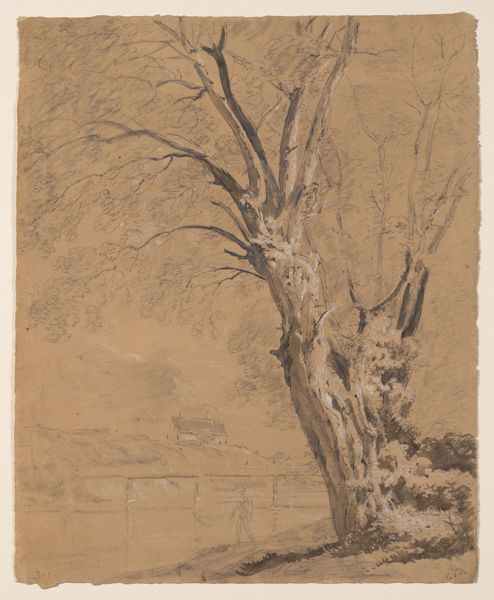
drawing, print, etching, ink
#
drawing
# print
#
etching
#
landscape
#
ink
Copyright: National Gallery of Art: CC0 1.0
Editor: So, this is André Dunoyer de Segonzac's "The Carriage," created in 1923. It's an etching, and immediately I’m struck by how stark it is; the lone tree seems to dominate the scene, almost obscuring the carriage itself. How do you read this piece? Curator: I see a deliberate commentary on the changing rural landscape during the early 20th century. The starkness isn't just aesthetic, it speaks to the socio-economic realities of the time. The dominating tree, while beautiful, could be read as a symbol of nature's endurance against the encroachment of modernization and the burgeoning role of the urban environment. What do you think that little carriage represents? Editor: Maybe a link to the past, a slower pace of life now dwarfed by industry and other looming societal constructs that change the landscape in unprecedented ways. Curator: Exactly. Segonzac was working in a period that witnessed the rise of industrialization, which shifted cultural values. His decision to feature the carriage, an outdated mode of transport, places it within the anxieties surrounding societal development, but that inclusion also underscores how artistic practice could give space to antiquated norms. What do you see the relationship between nature, represented by that beautiful tree, and the evidence of civilization, that house structure, represents? Editor: Hmm, I hadn't considered it so pointedly. It feels almost like the buildings and other elements, the bridge for example, are vying for dominance within the natural scenery and maybe are being seen critically, at least a bit. The landscape almost feels like a stage here. Curator: That is very perceptive. Remember that the artist is framing an important juxtaposition, a social commentary, using an artistic medium that by its very nature is rooted in reproduction and widespread access. Editor: That's a really interesting paradox when put in this light! Curator: Absolutely. I hadn't considered the element of paradox you mentioned so explicitly until this moment.
Comments
No comments
Be the first to comment and join the conversation on the ultimate creative platform.
